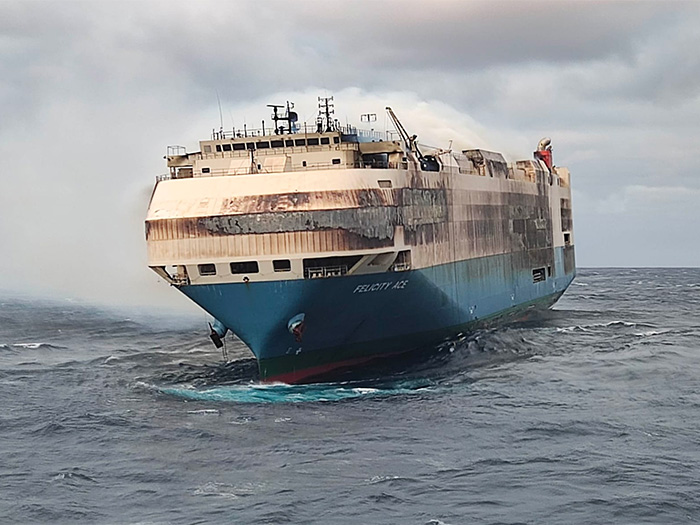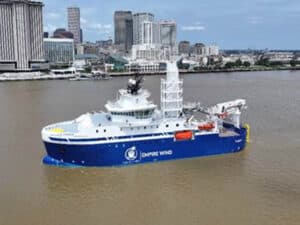
Salvage industry sees only “modest” recovery in gross revenues
Written by Nick Blenkey
Felicity Ace fire underscored car carrier fire costs [Image: Portuguese Navy]
Major salvage cases continue to make the headlines lately and, according to many insurance sources the costs of these cases are rising. Indeed, according to Allianz Global Corporate & Specialty, the near two-year salvage operation for the car carrier Golden Ray “cost in excess of $800 million.”
Given the sorts of numbers that start flying around whenever there’s a major casualty, it may come as a surprise that the International Salvage Union’s just-released statistics for 2021 show only a modest recovery in ISU member gross revenues. They reached $391 million, compared with $301 million in 2020.
ISU members provided 189 services in 2021, compared with 182 in the previous year.
Lloyd’s Open Form (LOF) cases continued to decline, down to just 29 cases compared to 40 in 2020. However LOF revenue was up, at $122 million, more than double the $60 million reported for 2020.
Wreck removal income reached $108 million from 56 services, compared with $98 million from 101 services in 2021.
CHALLENGING ECONOMIC CONDITIONS

“Economic conditions are challenging and activity and income for our industry is volatile year-on-year. The general trend towards a smaller number of larger and more complex cases enhances that annual variability,” said ISU President, Resolve Marine Group’s Captain Nicholas Sloane. “The numbers in this survey reflect the period when the world was still fully contending with the COVID pandemic which made operations and logistics more challenging. Throughout those difficult times ISU members showed time and again their problem solving and willingness to overcome obstacles to provide services to their clients, the shipowners, and their insurers. And, taken alongside the ISU’s pollution prevention statistics, these numbers demonstrate a dynamic industry which most years performs some 200 salvage services.”
“Professional salvors protect the environment, reduce risk and mitigate loss. They also keep trade moving – which is demonstrated so clearly when there are large containership cases. We continue to work closely with key stakeholders to ensure that there is continued global provision of professional salvage services.”
The 2021 ISU statistics show a historic low level of LOF cases – 29 for ISU members – generating income of $ 122 million. It compares with 40 cases worth $ 60 million in 2019. Revenue from LOF cases amounted to 50 per cent of all emergency response revenue and LOF cases accounted for 15 per cent of emergency response cases in 2021. SCOPIC revenue at $41 million in 2021 was up from $24 million previously.
Revenue in 2021 from operations conducted under contracts other than LOF was $120 million, effectively the same as in 2020 ($119 million). The average revenue from each non-LOF contract was therefore $750,000.
Wreck removal is an important source of income for members of the ISU but 2021, with $ 108 million from 56 operations (28% of the total income), showed the same trend as 2020 ($98 million received from 52 services – 33 per cent of the total).
The ISU statistics are collected from all ISU members by a professional third party, which aggregates and analyzes them. The statistics do not include the revenues of non-ISU members but are the only formal measure of the state of the marine salvage industry. The statistics are for income received in the relevant year but that can include revenue relating to services provided in previous years and there can be an element of “time lag”. The statistics are for gross revenues from which all of the salvors’ costs must be met.




